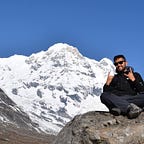Guns, Germs, and Steel: The Fates of Human Societies | Jared Diamond
Why are some places more developed than others? Extending this to a broader level, why are some continents more advanced than others? Discussing present-day conditions provides only proximate reasons. To uncover deep, underlying causes, we must delve into the past. Thus, the more pertinent question is: why were some continents more developed than others historically?
Jared Diamond begins his exploration around 1532, focusing on the battle between the Spanish conquistadors and the Native Inca people. This seemingly singular historical event is momentous, representing the collision of two worlds that had developed in parallel, unaware of each other. It was a clash of two worlds.
How was an army of a few hundred able to defeat and colonize an entire population of hundreds of thousands? The short answer is “Guns, Germs, and Steel.” However, this is merely the proximate answer. The more significant question is: why did Europeans have access to guns, germs, and steel, and not the native South Americans? This question could be asked of any other continent versus Eurasia (Europe and Asia combined, as they were in seamless contact). While there are many theories, the author emphasizes one major differentiator: geography. Yes, you heard that right!
As humans spread from Africa, the Americas (North and South) were the last to be populated, via the Bering Strait between Russia and Alaska. Once isolated, parallel inventions occurred, including writing, civilizations, and empires. However, the rate of progress was slower in other parts of the world compared to Eurasia. Before delving into the primary differentiator, geography, the author identifies another crucial factor: the availability of animals suitable for domestication.
In Africa and Eurasia, large mammals coexisted with humans for a much longer time, allowing them to adapt to each other. In contrast, the late arrival of humans in the Americas and Australia led to the mass extinction of large mammals, which had significant repercussions for animal domestication. Eurasian people were able to domesticate animals suitable for agriculture, facilitating a transition from a nomadic hunter-gatherer lifestyle to an agricultural one. This transition supported larger populations, fostering innovation and invention.
The biggest continental difference, however, lay in the transmission of knowledge. Geography played a crucial role here. According to this hypothesis (known as the Continental Axis hypothesis), the East-West orientation of Eurasia (meaning similar latitude across regions) gave an edge over the North-South orientation of the Americas or Africa. How’s that, you might ask? Recall from our geography class: the same latitude means different times but similar climatic conditions, while the same longitude means the same time but differing climatic conditions. Crops depend on climatic conditions. Thus, knowledge about a crop grown in Italy, for instance, could be useful in Iran and Japan due to the similar latitudinal climates. This facilitated the rapid propagation of knowledge, allowing for more experimentation and innovation. In contrast, the longitudinal orientation of Africa and the Americas hindered this process, as they had to re-invent the same wheel in multiple places.
Geography also influenced human (and animal) migration and trade. In Eurasia, people could migrate and trade more easily, confident that their knowledge would be applicable across regions. The Sahara divided North Africa from the rest of the continent, and the Panama isthmus divided the Americas, hindering communication and innovation. Consequently, Eurasia provided a more conducive environment for technological advancement. Thus, the East-West latitudinal orientation played a crucial role in giving European conquistadors their advantage (guns and steel) over Native Americans. As for germs, the domestication of animals again made the difference. As Eurasian people had long lived together with domestic animals, they were able to develop immunity against the germs transmitted from animals. The natives had none when they were exposed to Eurasian animal-borne germs, which devastated the native populations massively.
My Takeaway:
If I had to summarize the book in one statement, it would be this: geography shapes history, which in turn shapes geography (in terms of maps), and together, they shape the fate of a country. Personally, this book sparked my interest in various parts of the world and different points in history. While it provides fascinating explanations for different stages and rates of development, it also raises further unanswered questions. Today’s world still exhibits massive inequalities. So, what about regions sharing similar nature and geography, yet differing in development? Or, to make the question even more specific, what about regions sharing similar nature, geography, and culture, the important human ingredient?
To explore this, I turned to another insightful book: Why Nations Fail by Daron Acemoglu and James Robinson.
Originally published at http://nepaliwanderer.com on May 15, 2024.
